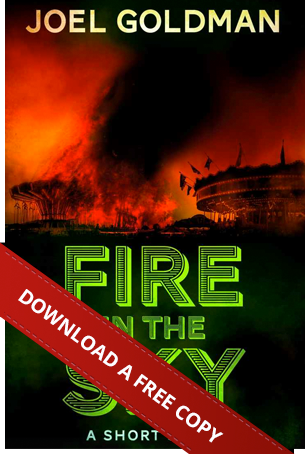Do you think you have good character? What is character? The New Webster’s Dictionary defines character as “the mental and moral qualities distinctive to an individual”. You might have heard a news story about some notorious criminal and thought about his or her bad character. We make character judgments on a daily basis, whether we realize it or not.
Parents must judge the kids their young teens choose to hang out with and make decisions about their character. Children judge potential playmates and decide if they want to begin friendships with one or more of them. When you’re alone on a dark street, you may stay away from people lurking in dark corners and alleyways for fear of running into a bad character.
Each person’s individual character traits make him or her unique in this world. Some qualities of good character include: benevolence, availability, determination, compassion, gentleness, honor, justice, loyalty, self-control, tolerance, virtue, wisdom and many more. People with bad character may possess some of the following traits: greediness, deceitfulness, self-centeredness; and they may be compulsive, lazy, vulgar, perverse, quarrelsome, mean, intolerant, irresponsible, along with a host of others.
Of course, most of us have a mixture of both good and bad traits in varying quantities. That’s what makes people interesting – the various mixtures of character traits and the ratios of good to bad traits. Most people are drawn to others who have an abundance of good character traits and typically avoid or don’t like those who exhibit too many bad traits.
The Character of Fiction
What about when you read a novel? What traits draw you into the world of certain characters? Do certain traits clue you in about whom the bad guy (or gal) is in a crime fiction story? Recently, I came across a post by novelist Chuck Wendig of Terrible Minds about the traits a great fiction character needs. The first one he lists is, quite obviously, a personality. Personality is the unique combination of qualities that form an individual’s unique persona. Some characters have a bubbly and talkative personality, another may be reserved and quiet, another may have a morose attitude, while still others just seem white-bread-plain.
Wendig goes on to list 24 more things that all great fiction characters have. He includes several basic needs of compelling characters like fear, quirkiness, motivation, a certain look, unique voice, flaws, strengths, secrets, surprise, internal and external conflict, as well as what authors call “agency”. Characters with agency draw the reader into their world through deliberate actions and decisiveness. In other words, compelling characters aren’t just passive, robot-like players that get pushed and moved along by the flow of the plot. Engaging fiction characters are in charge of their own destiny. Sure, other things in the story may influence a character’s decisions and actions, but when it comes down to it, a great character is what Wendig calls an “independent operator within the story”.
Perhaps two of the most important traits of a great character listed by Wendig are connections to other characters and connections to the reading audience. A great character, just like people in real life, has numerous connections to an extended web of others. These connections may be desirable or undesirable. In Stone Cold, our heroine, Alex Stone, has many connections to others who have important roles in the plot. Her connection to the antagonist blooms into a terrifying connection with her lover, Bonnie. In my newest Alex Stone thriller, Chasing the Dead, you’ll become even more enmeshed in the intricate web of characters and connections to one another.
Likewise, as Wendig points out, the reader must feel a connection to the characters. In other words, great characters are a little bit like us in one way, or another. He explains, “The best characters are a broken mirror: we want to see ourselves reflected back, if in a distorted, unexpected way.” That about sums it up. As readers, we identify closely with the protagonist and want to relate to their often-heroic deeds in some small way. Then the reader is the hero too.
There are so many more interesting points in his post. I encourage you to pay Terrible Minds a visit and check out the entire list. Warning: Wendig occasionally (ok, almost always) uses adult language in his posts. He definitely has a quirky personality. One of my favorites on his list is number 17.
As a reader, help me understand what character traits pull you in when you’re reading crime fiction or thrillers. Share your thoughts with me and let’s discuss it. Who knows? I might even incorporate some of the most interesting traits into a character in my next crime novel.
Photo credit: gemmasatire [dot] wordpress [dot] com












Heh heh…I like number 17 too! *wink
I like to “feel” what the characters feel. Breathing, temperatures, smells, etc., also their thought processes as it fills in the story. Descriptions of surroundings as seen from characters i.e., characteristics, textures, light, & emotions that emote from surroundings. What does rain feel like? Is it slippery, sticky, smooth? What does sweat smell, taste and feel like. Do tears cause physical pain?
Great! Thank you so much for sharing your thoughts on this. It’s very helpful (and interesting) to me as an author to hear what draws readers into a book’s characters. Thank you for taking the time to share. ~Joel
When I’m building a character web I pay a lot of attention to archetypes. Each character–whether they’re the hero, the opponent, an ally, etc.–has a two-sided nature. They have their strong side and they have their shadow. The shadow isn’t necessarily their evil side but rather a weakness that other characters might exploit.
I find archetypes are useful in a work of fiction in that most readers are already innately aware of them. By incorporating them into the story structure from the inside out we can lay the groundwork for a multi-layered plot that draws our readers in without confusing them (or ourselves) with too much description.
Not too sure about the 25 character traits… I realize the author is attempting to inject a bit of humor into his writing but I tend to take my work a bit more seriously than that. Still, it is worth reading. Thanks.